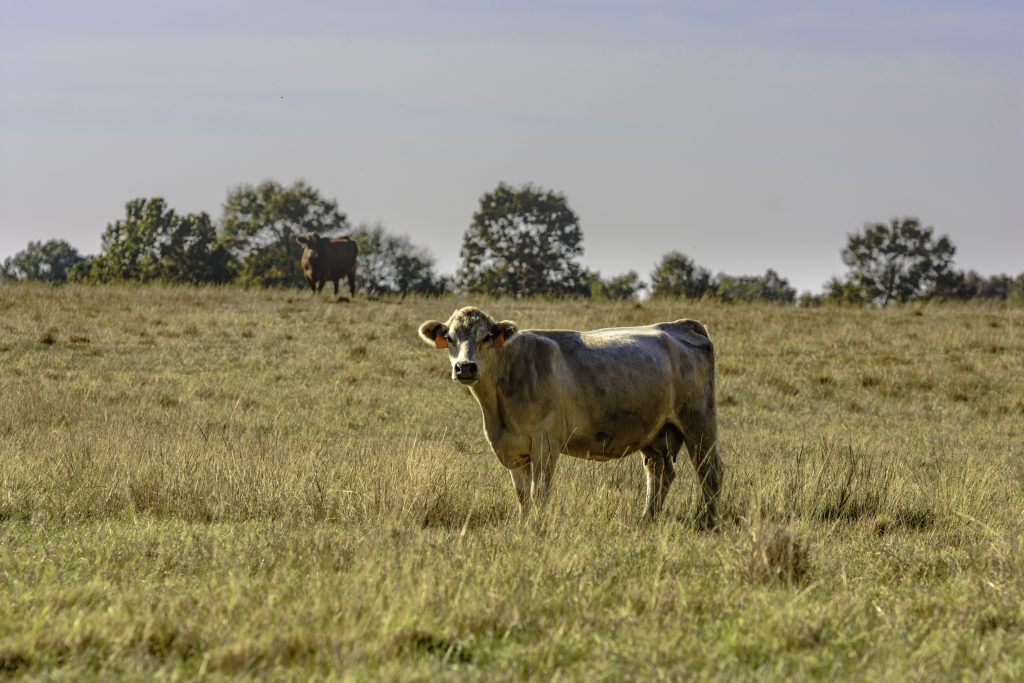
Dr. Derrell Peel, Oklahoma State University Extension Livestock Marketing Specialist, offers his economic analysis of the beef cattle industry as part of the weekly series known as the “Cow Calf Corner,” published electronically by Dr. Peel and Mark Johnson. Today, Dr. Peel talks about forage conditions and heifer retention.
With the growing season well under way, pasture and range conditions in the U.S. are generallygood. Nationwide, just eight percent of range and pasture is rated very poor, with 14 percent rated poor. According to the Drought Monitor, there is less drought in the country than anytime since April 2020. Several important beef cow areas continue to experience drought including much of Kansas, much of New Mexico, Arizona and southwest Texas, central and western Montana, and southern Florida. Percentages of range and pasture reported as poor to very poor are highest in New Mexico (70 percent); Texas (38 percent), Florida (32 percent), Arizona (27 percent), Kansas (21 percent), and Montana (18 percent).
Most of Oklahoma has gotten rain in the past month, with some of the driest areas in the northwest and Panhandle receiving rain this past week. Just seven percent of Oklahoma pasture and range is rated poor to very poor, with 57 percent rated good to excellent. Hay harvest, along with winter wheat harvest is proceeding despite some interruptions due to recent rains.
Better forage conditions remove one of the barriers to stabilizing and rebuilding the beef cow herd. Cattle producers, in many cases, can begin retaining heifers…but are they? What producers want to do at this point is unclear. Cattle producer expectations are influenced by several considerations. Despite improved current forage conditions, the threat of rebuilding La Niña conditions later in the year is likely tempering some production plans. Moreover, while higher calf prices provide incentives to increase calf production, it’s not clear that producers are yet reacting to long term profitability prospects (to retain heifers) as much as short-term revenue from selling more calves now.
I suspect some heifer retention is beginning but we will not have any direct data until next year because the July Cattle Inventory has been cancelled. Heifer slaughter data, along with quarterly heifer feedlot inventories will eventually show the impact of increased heifer retention. However, current heifer slaughter reflects feedlot placement decisions made roughly six months ago and thus will indirectly reflect heifer retention only well after the fact. Moreover, heifer slaughter data includes both beef and dairy heifers; and the dynamics of beef on dairy crossbreeding is likely confounding heifer slaughter data somewhat. While it is possible that some yearling heifers from last year may be in development for breeding in 2024, it appears that if (when) heifer retention begins more earnestly this year, it will be with heifers from the current calf crop. This could include some fall-born heifers being weaned now but is more likely to be spring calves weaned this fall. Most of these heifer calves will not breed until 2025 and enter the herd in 2026.
Regardless of whether heifer retention is beginning now, the beef cow herd is likely to be smaller yet on January 1, 2025, with limited (at best) herd growth prospects in 2026. The question of when heifer retention begins is important in two respects. First, heifer retention will further squeeze feeder supplies and push feeder cattle prices higher. That is likely to happen later this year. Secondly, the longer it takes to start heifer retention, the longer the industry will continue to see reduced cattle inventories, smaller beef production, and high average cattle and beef price levels.


















